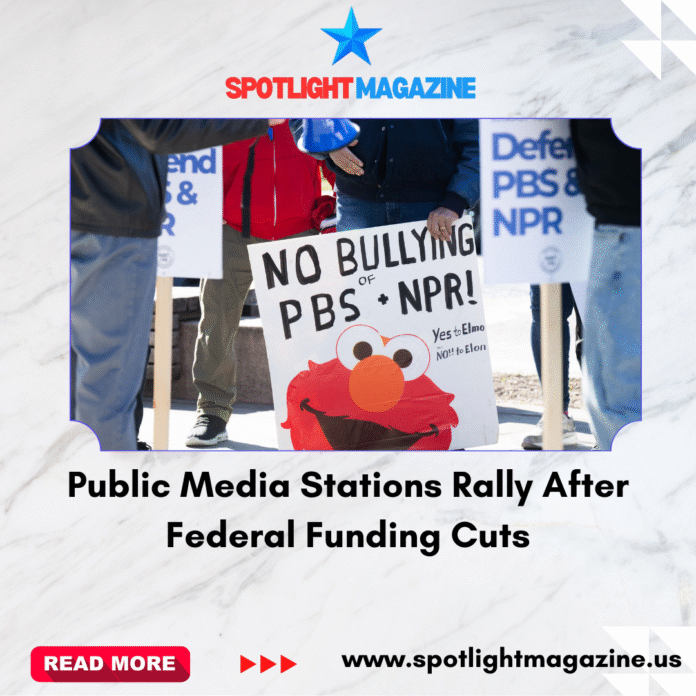Public television and radio stations across the United States are facing one of their biggest challenges in decades after Congress eliminated $1.1 billion in federal funding for public broadcasting this summer. The money, once distributed by the Corporation for Public Broadcasting, helped support 330 PBS and 246 NPR stations. With that funding gone, stations are scrambling to raise money, cut costs, and rethink their futures.
For many stations, the loss is devastating. Spokane, Washington’s PBS affiliate KSPS suddenly faced a $1.2 million budget gap — about 18% of its budget. To make matters worse, nearly half of KSPS’s donors once came from Canada, but many of them stopped giving, upset by former President Donald Trump’s comments about making Canada the 51st U.S. state. The station has since turned to its community for urgent help.
Across the country, stations have launched emergency fundraising drives. The response from the public has been strong, showing how much people value local programming. In Wilmington, North Carolina, WHQR raised more than $200,000 in just three days — more than enough to cover its shortfall. Hawaii Public Radio, which lost $525,000 in federal money, raised $650,000 after appealing to listeners. “It’s a validation that what you’re doing matters to the community,” said Meredith Artley, the station’s president.
Some donations have been especially heartwarming. A young child in Florida collected money for Alaska stations and mailed it in with a note written in crayon. In California, PBS SoCal received three donations of more than $100,000, including one from a regular donor who normally gave only $300. These gestures have given station managers hope during a difficult time.
Still, not every community has wealthy donors. Smaller and rural stations, like Lakeland PBS in northern Minnesota, are struggling to figure out how to cover major gaps in their budgets. “These are extremely challenging times,” said station manager Jeff Hanks, who now lies awake wondering how to replace $1 million in lost funding.
To help, PBS and NPR have reduced the fees that stations pay for programming. On average, PBS stations will see a 15% cut in dues, and some will receive even greater relief. Public media leaders are also encouraging donors in wealthier cities to “adopt” stations in poorer or rural areas. In addition, major philanthropic groups like the Knight and MacArthur foundations are trying to raise $50 million to support the hardest-hit stations.
In Alaska, where public media provides essential services across a huge and often isolated state, stations are trying to raise $15 million by October. Alaskans have rallied to support their broadcasters, but tough choices still had to be made. “Alaska Insight,” a weekly television program, has already been canceled, and the future of the video series “Indie Alaska” is uncertain.
Job and programming cuts are happening elsewhere, too. In Spokane, KSPS has reduced staff by a third. Future seasons of local shows may be shorter or less frequent. On a national level, PBS is considering trimming the length of series. While completed projects, like Ken Burns’ documentary “The American Revolution,” will still air, future productions may not be as ambitious.
At the same time, the crisis is inspiring collaboration. Some public stations are exploring ways to share services such as finances, management, and even programming. PBS SoCal in Los Angeles has shared fundraising materials with other stations and recruited celebrities like Kerry Washington, Jack Black, and John Lithgow to film appeals for donations that any station can use.
For now, increased donations and reserves are helping stations get through the first wave of the crisis. But PBS president Paula Kerger warns that the bigger test will come next year, when emergency donors may no longer give at the same levels. “I am a realist,” she said. “Some vulnerable stations may not make it.”
Even so, many station leaders remain hopeful. “Our community needs us,” said Ed Ulman, president of Alaska Public Media. “The outcry we’ve seen shows that people value what we do.” Others echo that sentiment, insisting that while the system may change, public media will survive.


